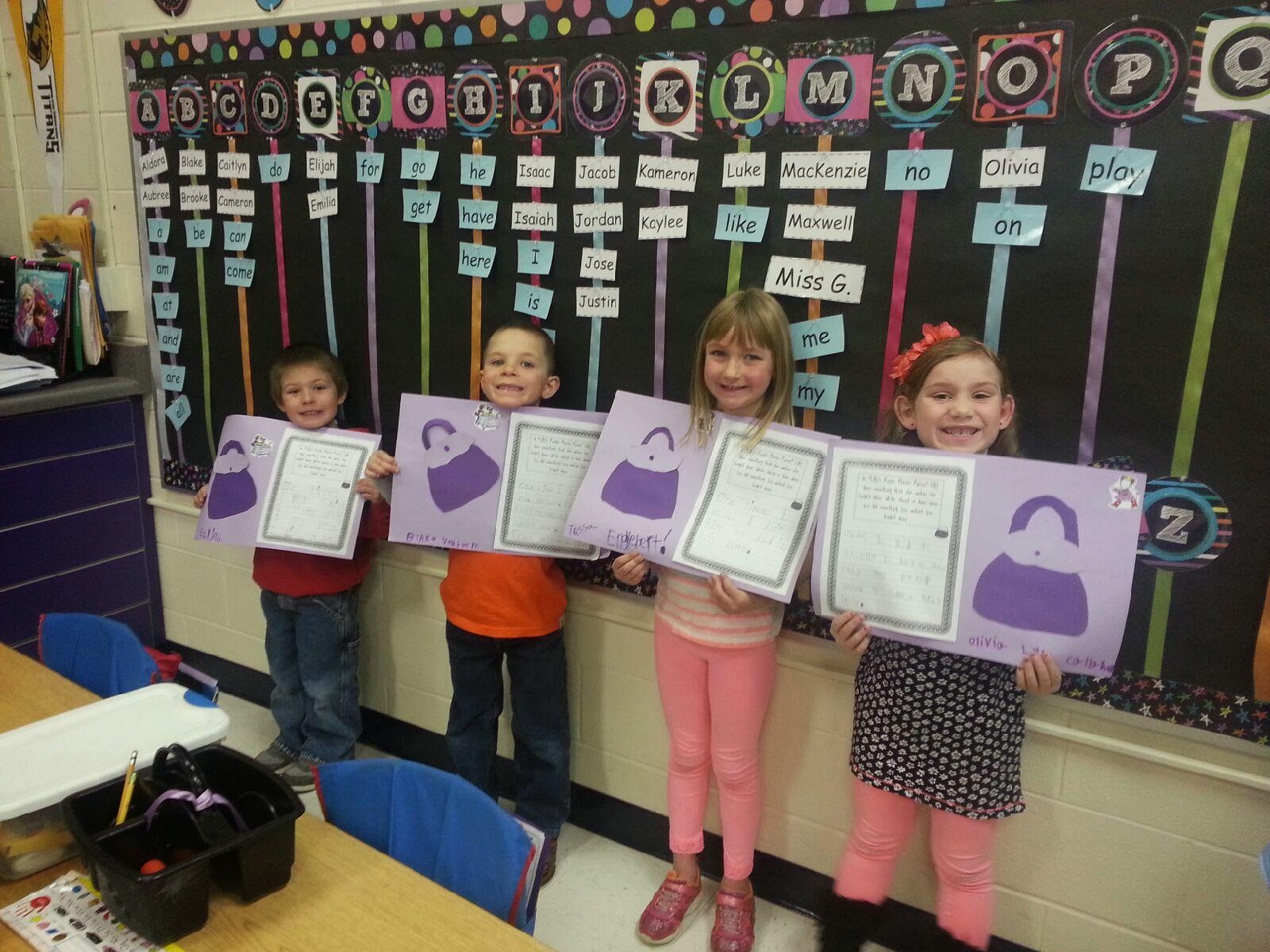~ Our Favorite Characters ~
In this unit, we will be studying some of our favorite characters. We will be exploring books written by Ian Falconer, Doreen Cronin, and Kevin Henkes.
Visit these websites for more information, videos, games, and activities!
http://www.kevinhenkes.com/
http://www.doreencronin.com
http://www.oliviathepiglet.com/
READERS WORKSHOP
- Readers think about the adventures that characters in two different books have that are the same.
- Readers think about the adventures that characters in two different books have that are different.
- Sometimes readers come to tricky words, and sometimes readers come to words they don't understand. When readers come to a tricky word they don't understand, they use their reading strategies.
- When readers come to a word they don't understand, they re-read the sentence or the page to try to figure it out.
- When readers come to a word they don't understand, they use picture clues.
- When readers talk about their books, they are knee to knee, making eye contact, and speaking clearly.
- Readers form an opinion about the character or book by saying, "I like this... because..." OR "I don't like this... because..."
- Readers share evidence with their partner about how they formed their opinion. (On page... she says...)
- Readers make connections with their book by thinking, "This part reminds me of a time..."
- Readers share their connections with a partner.
- Readers make connections between books by saying, "This reminds me of a the book ___ I read because..."
- Homophones are words that sound the same, but look and mean something different.
Here are a few books that we will be reading to practice decoding and talking about books!
WRITERS WORKSHOP
- Writers "zoom" in on one small moment to tell the "most exciting part."
- Writers have a page that shows what happened in the beginning.
- Writers put their pages in order and use transition words such as first, next, then, last, etc.
- Writers have a page that shows what happened last. Writers come up with an "ending" to their story.
- Writers add lots of details across many pages in the middle of their stories to tell their small moment.
- Writers tell who was there.
- Writers tell what they did.
- Writers tell how people felt.
- Writers can draw details about what happened in their illustrations by using speech bubbles, movement lines, direction arrows, etc.
- Writers can add juicy words to their writing.
- Writers reread and add punctuation to their writing.
- Writers reread their snap words and make "fix-ups" to their work.
- Writers choose a piece to "fancy-up."
- Writers edit their stories using a checklist with a partner.
WORD WORK
- Homophones are words that sound the same, but look and mean something different.
Please continue practicing kindergarten snap words with your child nightly. Students should be able to say the word within three seconds as well as spell the word correctly.
Ask students to name the vowels for you (a, e, i, o, u, and sometimes y!)
Ask your child to "flip" each sound a vowel makes.
Review the sounds that are stuck together but make one sound - ch, sh, th, wh
Ask your child to find vowel teams for you as you read - the "ai" in rain, the "oa" in goat
Ask your child to find words that have the "Magic E" in them and
then prove to you why it is a Magic E word.





No comments:
Post a Comment